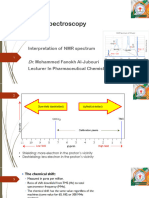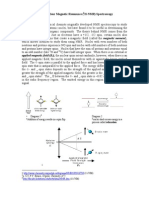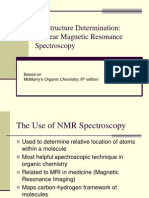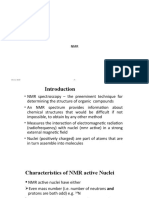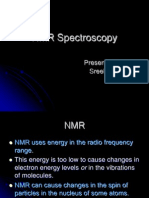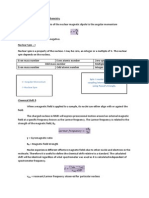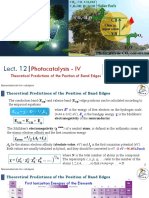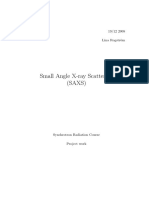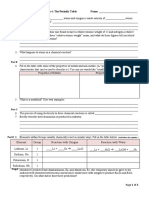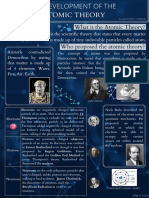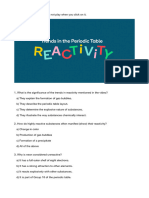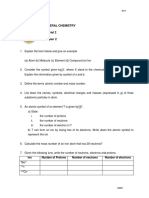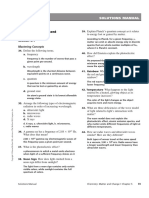0% found this document useful (0 votes)
162 views8 pagesNMR Spectroscopy Results Analysis
1) NMR spectroscopy is used to interpret molecular structures by analyzing factors like chemical shift, spin multiplicity, coupling constants, and integration from NMR spectra.
2) Strategies for solving molecular structures from NMR data include determining the molecular formula, calculating double bond equivalents, analyzing chemical shifts and spin multiplicities to determine structure fragmentation, and using 2D NMR to build the molecular skeleton.
3) 1H and 13C NMR are most common but other NMR techniques like 19F, 31P, and 14N NMR provide additional structural information.
Uploaded by
typodleeCopyright
© © All Rights Reserved
We take content rights seriously. If you suspect this is your content, claim it here.
Available Formats
Download as DOCX, PDF, TXT or read online on Scribd
0% found this document useful (0 votes)
162 views8 pagesNMR Spectroscopy Results Analysis
1) NMR spectroscopy is used to interpret molecular structures by analyzing factors like chemical shift, spin multiplicity, coupling constants, and integration from NMR spectra.
2) Strategies for solving molecular structures from NMR data include determining the molecular formula, calculating double bond equivalents, analyzing chemical shifts and spin multiplicities to determine structure fragmentation, and using 2D NMR to build the molecular skeleton.
3) 1H and 13C NMR are most common but other NMR techniques like 19F, 31P, and 14N NMR provide additional structural information.
Uploaded by
typodleeCopyright
© © All Rights Reserved
We take content rights seriously. If you suspect this is your content, claim it here.
Available Formats
Download as DOCX, PDF, TXT or read online on Scribd
/ 8

